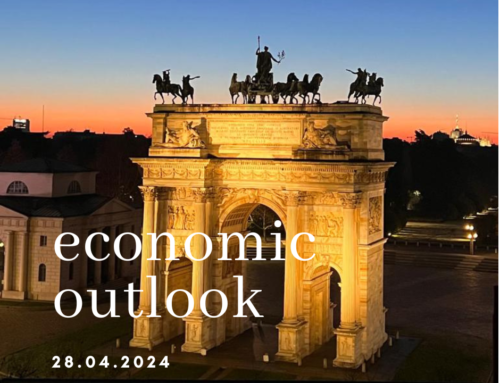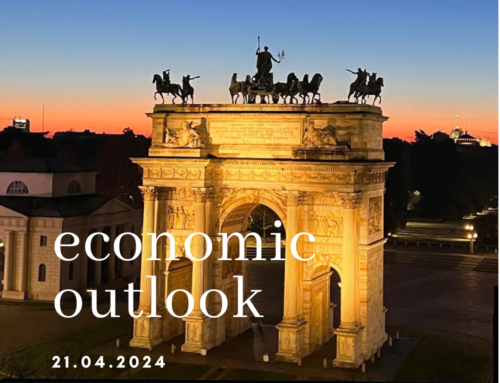| USA The S&P Global Flash Composite PMI fell 1.3 points in June to a 3-month low of 53.0 but continued to signal a solid expansion in private sector activity. Output and new orders continued to expand, albeit at a slower pace than in the prior month. Growth in private sector headcounts was the softest since January, “reflecting a combination of lower demand for staff and poor candidate availability.” Following back-to-back months of softening price pressure, the PMI report signaled a pick-up in input inflation “as companies stated that greater wage bills in particular placed further pressure on business expenses.” The prices charged sub-index, on the other hand, cooled to a 32-month low. The decrease in the composite index was driven by the manufacturing sector, with the associated tracker easing from 48.4 to a 6-month low of 46.3. Factory output (from 51.0 to 46.9) fell back into contraction in June, while new orders dropped at the fastest clip since December. Polled managers blamed lower demand on “weak customer confidence and destocking by clients.” As new orders grew rarer, work backlogs at U.S. factories contracted further Housing starts soared back to 1,631K in May (seasonally adjusted and annualized), a result far above consensus expectations (1,400K). The monthly gain (+21.7%) was the largest recorded since October 2016. The sharp improvement in ground-breaking in May reflected gains in both the single-family (+18.5% to 997K) and the multi-unit (+27.1% to 634K) categories. The rebound also resulted in an increase in the total number of homes currently under construction, which went from 1,671K to a six-month high of 1,696K. More specifically, the number of multi-unit dwellings under construction swelled to a new all-time high of 994K Building permits, for their part, advanced 5.2% to a seven-month high of 1,491K on gains for both single-family homes (+4.8% to 897K) and multi-unit dwellings (+5.9% to 594K). Although it remained close to the 50-year high reached back in February (301K), the number of authorized residential projects for which construction had not yet begun fell from 291K in April to 282K in May. The decline suggests that capacity pressures are easing in the real estate sector, and this should allow builders to tackle their bloated work backlogs Homebuilder sentiment rose for the sixth month in a row in June as measured by the National Association of Home Builders Market Index, which jumped 5 points to an 11-month high of 55. NAHB data also signaled a slight improvement in prospective buyer traffic, as the corresponding gauge climbed from 33 to 37 Existing-home sales edged up 0.2% in May to 4,300K (seasonally adjusted and annualized) instead of retracing to 4,250K as per consensus. Contract closings increased 4.7% (to 450K) in the condo segment, but slid 0.3% (to 3,850K) in the single-family category. Despite higher sales, the inventory-to-sales ratio edged up one tick to a six-month high of 3.0 (<5 indicates a tight market for the National Association of Realtors) thanks to a small increase in the number of homes available on the market (from 1,040K to 1,080K). This level of inventory, the lowest ever observed in a month of May, remained indicative of a tight market, as did the very quick turnover rate. Properties that sold in May 2023 had been on the market for 18 days on average, half as long as those that sold back in February The Conference Board’s index of leading economic indicators (LEI) fell for the fourteenth straight month in May, sliding 0.8 point to a 34-month low of 106.7. Four of the ten underlying economic indicators acted as a drag on the headline index, with the biggest negative contributions coming from average consumer expectations (-0.29 pp), ISM new orders (-0.28 pp), and the interest rate spread (-0.19 pp). Historical analysis shows that an annualized drop of 3.5% in the LEI index over six months, coupled with a six-month diffusion index below 50%, is generally symptomatic of a pending recession. Both conditions were met in May: The LEI index dropped 8.4% annualized over six months and the six-month diffusion index stood at 40% US Federal Reserve Chair Jerome Powell, in his semiannual congressional testimony on monetary policy, told lawmakers this week that while the pace of Fed rate hikes has slowed, the central bank is likely to hike rates further this year. A strong majority of the members of the Federal Open Market Committee expect to hike rates twice more, Powell told the Senate Banking Committee on Thursday. Decisions will be made on a meeting-by-meeting basis, Powell said, while noting that there is a long way to go to get inflation back down to its 2% goal. He said that policymakers expect the unemployment rate to rise further but that he still sees a path to an economic soft landing The major benchmarks closed lower in a holiday-shortened trading week. The Nasdaq Composite suffered its first weekly decline in two months, while the S&P 500 Index recorded its first drop in six weeks. Growth stocks outperformed value shares, while large-caps fared better than small-caps. The annual rebalance of the Russell indexes on Friday appeared to keep volumes muted earlier in the week, as some investors prepared to shift the allocations of their portfolios in response. Markets were shuttered on Monday in observance of the Juneteenth holiday In terms of data release, the durable goods print is out on Tuesday. The manufacturing sector continues to reel. The ISM manufacturing index has been signaling contraction for seven straight months, and manufacturing production rose just 0.1% in May. Demand for new capital expenditures has faltered amid high financing costs and elevated uncertainty about the economy’s trajectory. Core capital goods orders jumped 1.4% in April, and some payback may be expected in May. Specifically, durable goods orders may slip 0.4% in May, but excluding transportation, orders are also expected to be flat in May The personal income & spending index is out on Friday. There remains an undeniable resilience in household spending. Retail sales surprised to the upside in May with an outsized gain in building materials and auto dealers specifically. But even stripping through some of the volatility, control group retail sales were still up 0.2%. While there has been some loss in momentum over the past six months, households’ staying power is still intact. As inflation subsides, consumer purchasing power has recovered with real disposable personal income up for the past 10 consecutive months. UK The Bank of England’s (BoE) Monetary Policy Committee (MPC) voted to raise interest rates by 50bp to a new rate of 5.0 percent. Seven members voted for a 50bp rise while two members voted to hold interest rates at 4.5% (note: this was the last MPC meeting for the dovish Silvana Tenreyro, who is retiring). This rise was above many market expectations and, looking out into the rest of the year, investors still expect the MPC to continue to raise rates to approximately 6% by year-end. After watching inflation climb to over 10% against the target rate of 2%, the Bank of England is looking to re-establish its credibility. As part of this, the MPC has been trying to move ahead of investor expectations, a point that was made clear. The difficulty is that these expectations are now for interest rates to move above 6% by year- end, a level which would constitute “overtightening” and which would make a recession a much more likely outcome. Whatever else, challenging times look very much set to continue The UK’s GfK consumer confidence indicator rose to -24 in June from -27 in May. This is the fifth consecutive monthly improvement in consumer confidence and marks the highest reading for 17 months. Three measures of consumer sentiment saw improvement, including both the way consumers are viewing their own personal finances and the economic outlook. This latest reading suggests that consumers are showing resilience in the face of seemingly stubborn inflation Retail sales figures for May registered levels that were better than consensus: sales including fuel grew 0.3% MoM and -2.1% YoY. The positive MoM figures were driven by non-store retailing sales volumes increasing by 2.7% in May 2023 due to strong sales of outdoor-related goods and summer clothing online. Food store volumes fell slightly by -0.5%, with retailers indicating that the increased cost of living is affecting sales. Retail sales by volume have been on a flatlining trend since the Autumn of last year. EU Eurozone business output grew for a sixth month in June but almost stalled, pointing to renewed weakness in the economy after the recovery in the early part of the year, according to a purchasing managers’ survey data provided by S&P Global. The HCOB Flash Eurozone Composite Purchasing Managers’ Output Index fell to a five-month low of 50.3 from 52.8 in May. A level above 50 denotes expansion. German producer prices rose in May at their slowest pace since July 2021, a sign that inflation may be easing. Annual producer prices climbed 1.0%, down from 4.1% in April. Meanwhile, the Ifo Institute predicted the German economy would contract 0.4% in 2023, more than the 0.1% forecast in March In local currency terms, the pan-European STOXX Europe 600 Index fell 2.93% on worries that further interest rate increases might cause a recession in Britain and the eurozone. A disappointing economic recovery in China and hawkish comments by U.S. Federal Reserve Chair Jerome Powell contributed to the gloom as well. Major stock indexes struggled, with Germany’s DAX dropping 3.23%, France’s CAC 40 Index sliding 3.05%, and Italy’s FTSE MIB losing 2.34%. CHINA No major indicators were released in China during the week. However, mounting evidence that the country’s recovery is losing steam raised fresh concerns about the economic outlook. The lackluster results in recent weeks have led economists at several key banks to lower their 2023 growth forecasts for China, which is struggling with slowing export demand, a yearslong housing market slump, and weak business and consumer confidence Chinese banks lowered their one- and five-year loan prime rates by 10 basis points for the first time since August 2022 as expected, after the People’s Bank of China (PBOC) cut its medium-term lending facility rate last week. While the drop was in line with the PBOC’s rate cut, some analysts predicted a larger reduction of 15 basis points in the five-year rate, according to Bloomberg Chinese officials gave US Secretary of State Antony Blinken a cool reception when he arrived in Beijing for two days of talks this week, dubbing the meeting a “courtesy” and granting the secretary only a last-minute, half-hour discussion with President Xi Jinping. The US had hoped the visit would do more to restore communications channels between Washington and Beijing, but China was unwilling to restore direct military-to-military interactions, something the United States fears will increase the risk of accident or miscalculation in the crowded Taiwan Strait and South China Sea. News this week that China plans to station troops in Cuba, ostensibly to train local forces, did not help, nor did comments from President Joe Biden, who referred to Xi as a dictator. China protested that the president’s characterization was a provocation Chinese stocks retreated after a holiday-shortened week as investor confidence waned over a lack of stimulus measures amid the flagging post-pandemic recovery. The Shanghai Stock Exchange Index fell 2.3%, while the blue-chip CSI 300 gave up 2.51%. In Hong Kong, the benchmark Hang Seng Index declined 5.74%, its biggest drop in three months. Financial markets in mainland China were closed Thursday through Friday for the Dragon Boat Festival holiday, while the Hong Kong Exchange was closed on Thursday and reopened for trading on Friday. |
| Sources: T. Rowe Price, MFS Investments, Wells Fargo, National Bank of Canada, Handelsbanken Capital Markets, M. Cassar Derjavets. |


